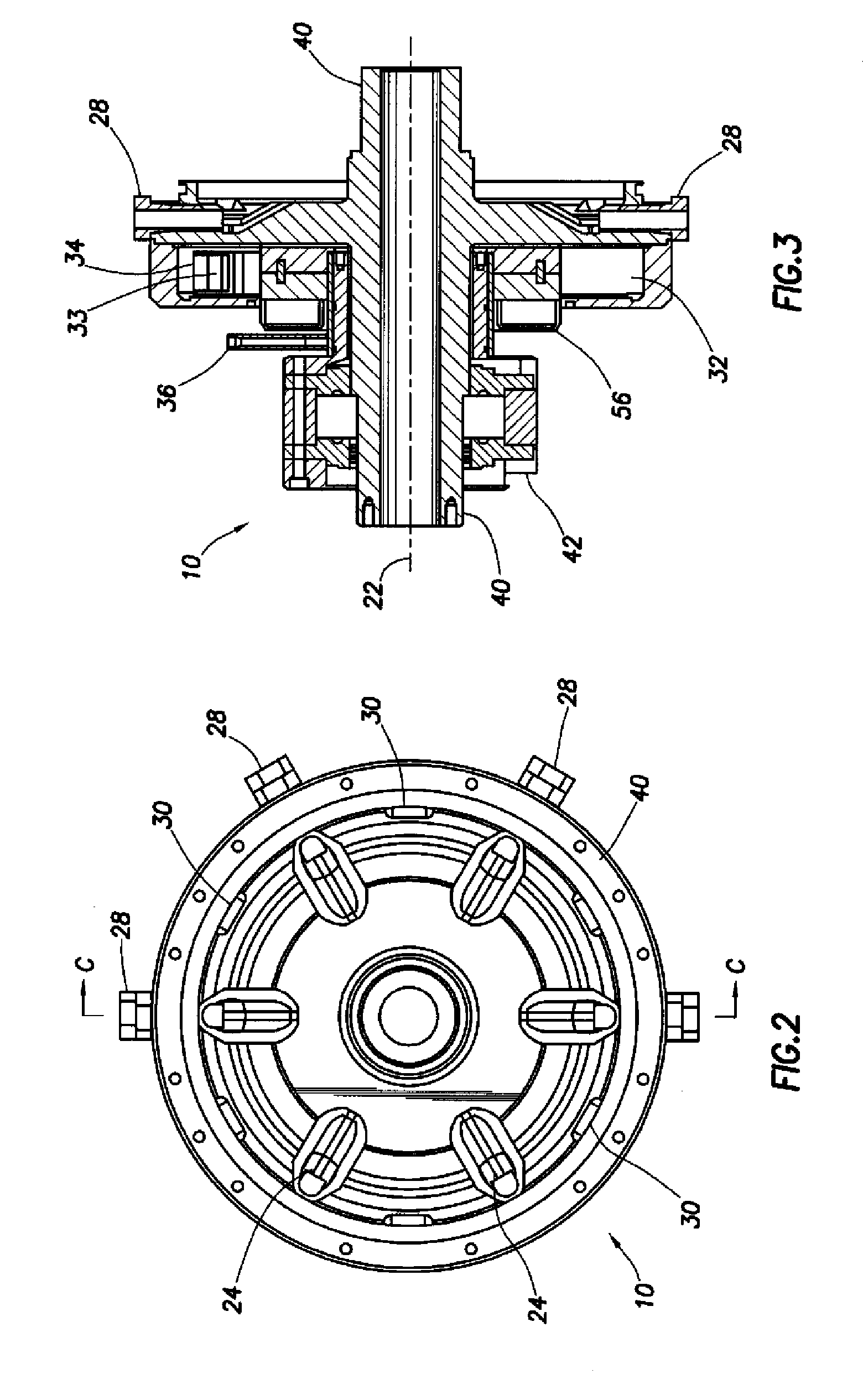Three Phase Decanter Centrifuge
a three-phase, centrifuge technology, applied in centrifuges, rotary centrifuges, etc., can solve problems such as the freedom to perform other duties
- Summary
- Abstract
- Description
- Claims
- Application Information
AI Technical Summary
Benefits of technology
Problems solved by technology
Method used
Image
Examples
Embodiment Construction
[0018] Focusing first on FIG. 1, a liquids phase separator 10 is illustrated. The separator 10 comprises a structural portion of a much larger decanting centrifuge, a portion of which is illustrated in FIG. 1. The decanting centrifuge is shown in FIG. 1 without the conventional screw conveyor or scroll in order to illustrate the three-phase separator of the present invention.
[0019] The liquids phase separator 10 includes a rapidly spinning bowl comprising a cylindrical portion 12 and a conical portion 14. Solids, separated from a slurry introduced to the centrifuge, are scrolled up the conical portion 14 of the bowl where they are discharged through a solids discharge as shown by an arrow 16. The liquid remainder of the slurry is stratified into a lighter layer 18 (typically oil or oil based component) and a heavier layer 20 (typically water). Together, the two liquids layers may be referred to as the “pond”. The entire apparatus rotates about an axis 22 in a manner well known in t...
PUM
 Login to View More
Login to View More Abstract
Description
Claims
Application Information
 Login to View More
Login to View More - R&D
- Intellectual Property
- Life Sciences
- Materials
- Tech Scout
- Unparalleled Data Quality
- Higher Quality Content
- 60% Fewer Hallucinations
Browse by: Latest US Patents, China's latest patents, Technical Efficacy Thesaurus, Application Domain, Technology Topic, Popular Technical Reports.
© 2025 PatSnap. All rights reserved.Legal|Privacy policy|Modern Slavery Act Transparency Statement|Sitemap|About US| Contact US: help@patsnap.com



